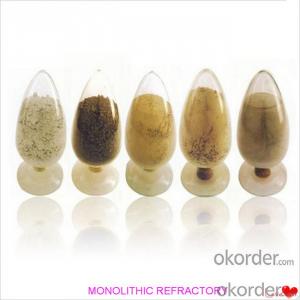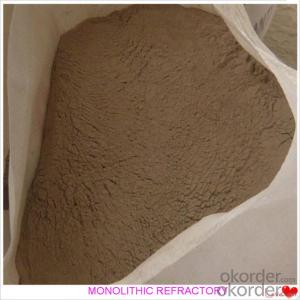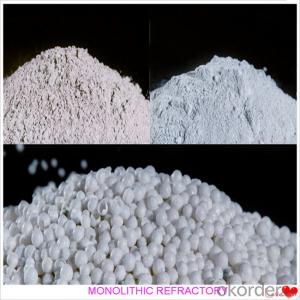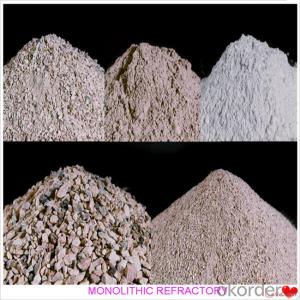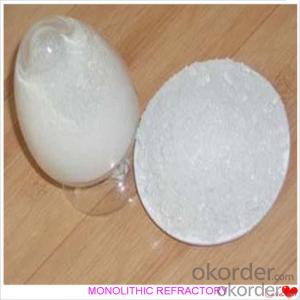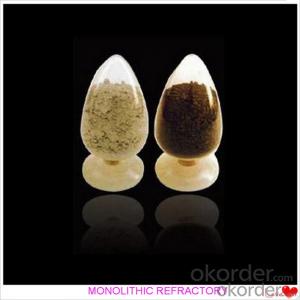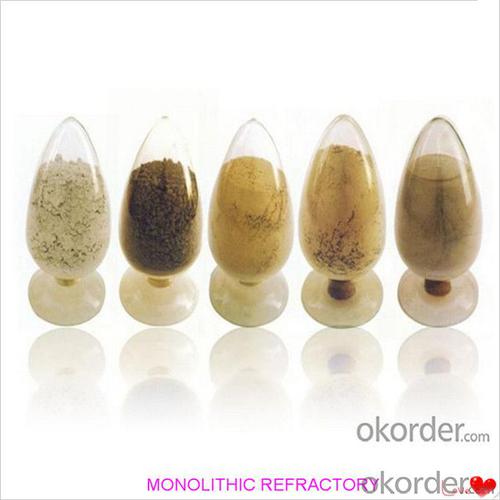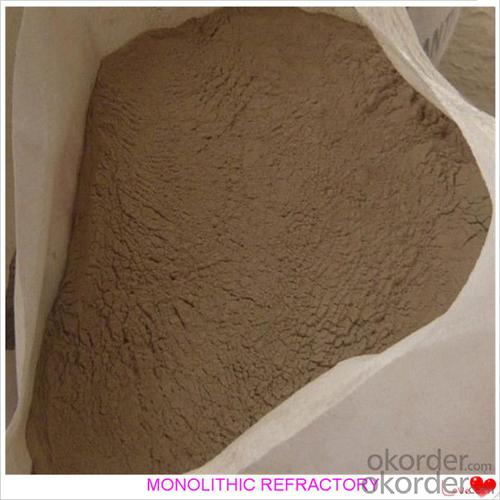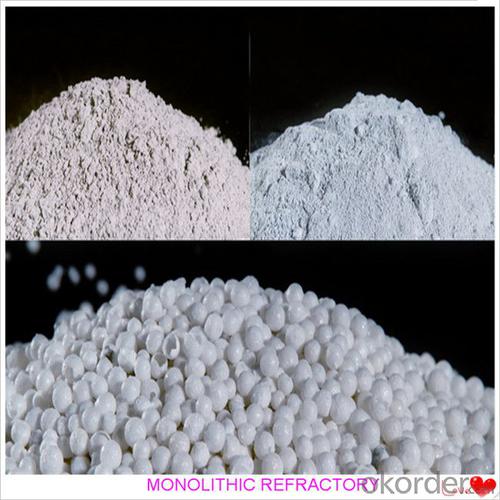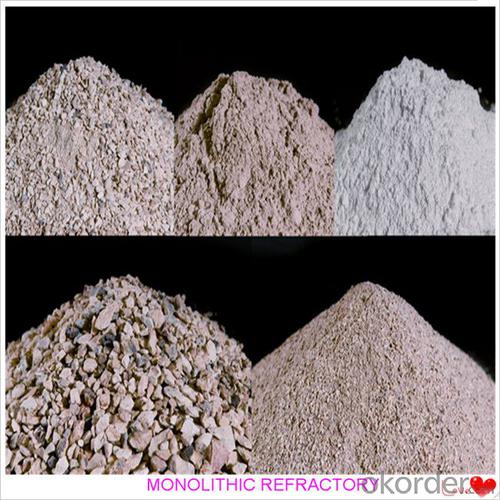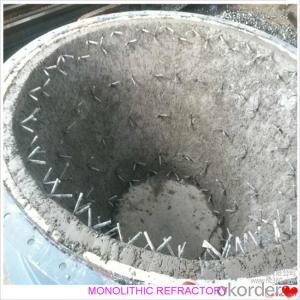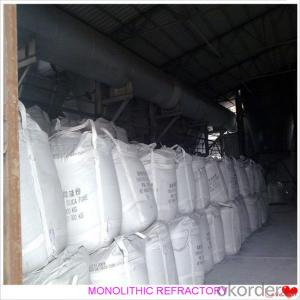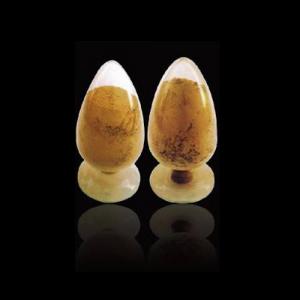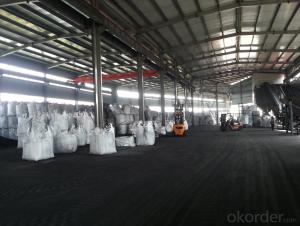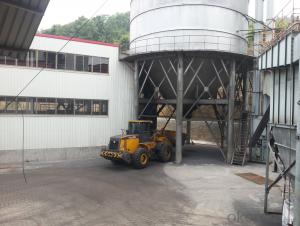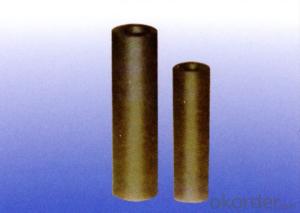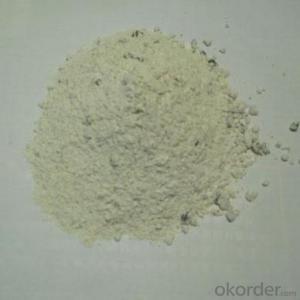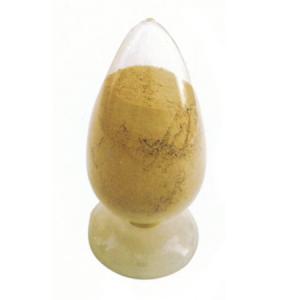Monolithic Refractories Mesh Shape Castable for Fireplace and Industrial Furnace
- Loading Port:
- China main port
- Payment Terms:
- TT OR LC
- Min Order Qty:
- 1000 kg
- Supply Capability:
- 3000000 kg/month
OKorder Service Pledge
OKorder Financial Service
You Might Also Like
Mesh Shape Castable For Fireplace and Industrial Furnace
Product Description:
Mesh shape castable is manufactured according to international standards. The product is famous for its excellent abrasion resistance and low thermal conductivity. Further, these can be provided in different specifications as required by the clients. The Mesh shape castables are used high purity raw materials and additives as the main material, and made of under superfine powder adding technology.
Product Advantages:
The material has excellent structural stability and air tightness, and has high physical and chemical properties, also has a fine working ability.They should be used with the same material products.They are widely used in various kinds of kiln lining.Such as boiler, blast furnace hot blast stove, heating furnace, ceramic kiln, etc.Furnaces of metallurgy industry, heat treatment furnace. Furnace of incineration of garbage, recirculating fluidized bed furnace. Furnaces of chemical industry and construction industry.
Product Applications:
For feature of Mesh shape castable, they have excellent abrasion resistance, thermal shock resistance, high-temperature resistance, anti-corrode and have high intensity.
Designed for refractory lining of blast furnace iron and slag runners, skimmers and soon
They can be used in troughs of small and mid size BFs and in all positions of the troughs where fast tapping is required.
Main Product Features:
1. High refractoriness, High refractoriness under load.
2. High density, low porosity.
3. Good slag resistance and corrosion resistance.
4. High strength and wear resistance.
5. Good resistance to flake performance.
6. Good thermal shock stability.
7. Scouring resistance
8. Good hot strength.
Product Specifications:
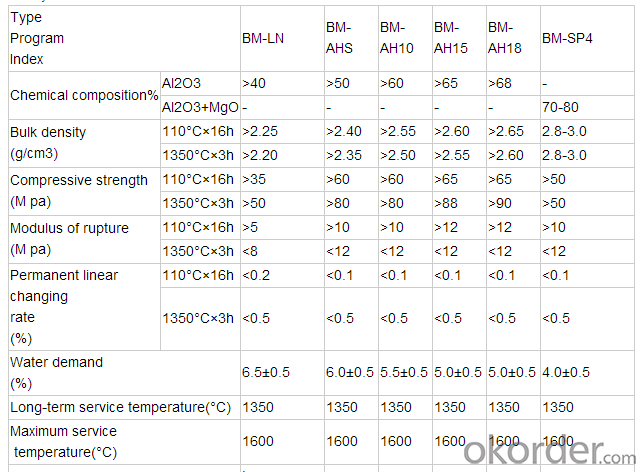
FAQ:
1. How you can control your quality?
For each production processing, we have complete QC system for the chemical composition
and Physical properties. After production, all the goods will be tested, and the quality certificate
will be shipped along with goods.
2. What's your delivery time?
It usually needs about 20days- 45 days after receiving the deposit.
3. Do you provide free samples?
Yes, we can provide a free sample for testing, If we have sample in stock,
The quantity based on the material type, The buyer should bear all the shipping costs.
4. What's your payment terms?
We can accept 30% deposit, 70% balance before shipment for ordrs over $ 2000.
5. Can we visit your Company?
Yes, certainly. You are very welcome to China and we will be honored to have a customer and friend.
Product Picture:
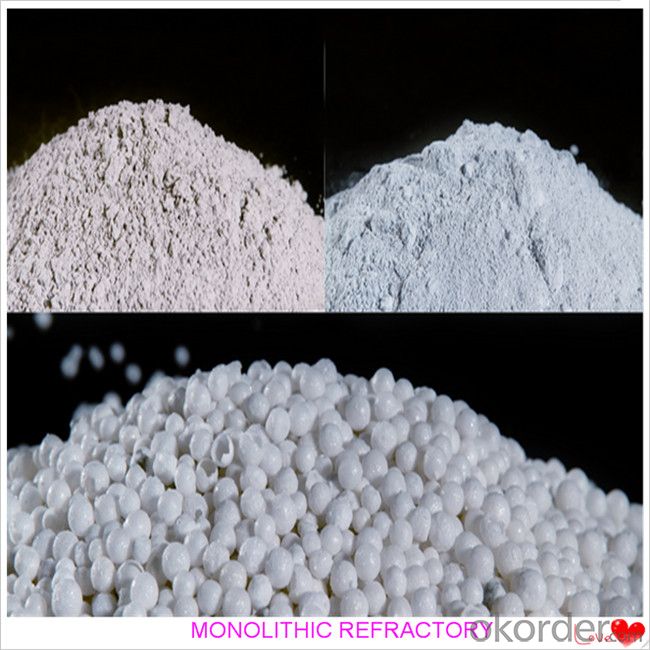
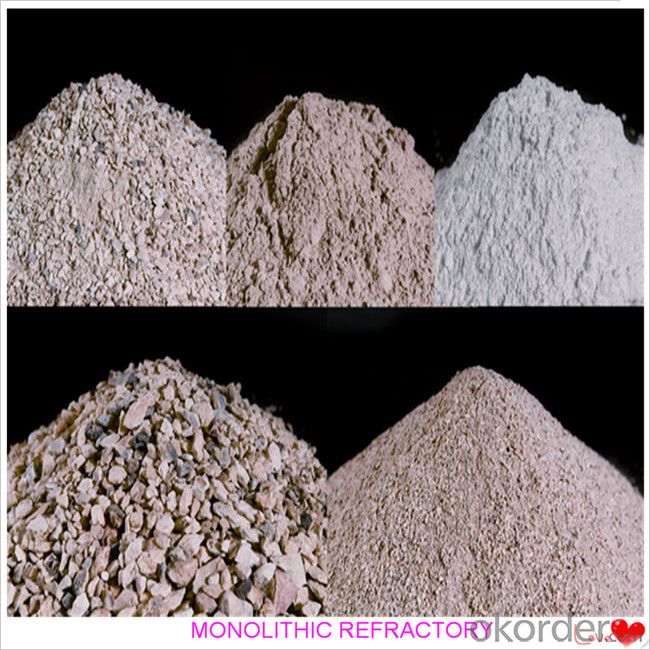
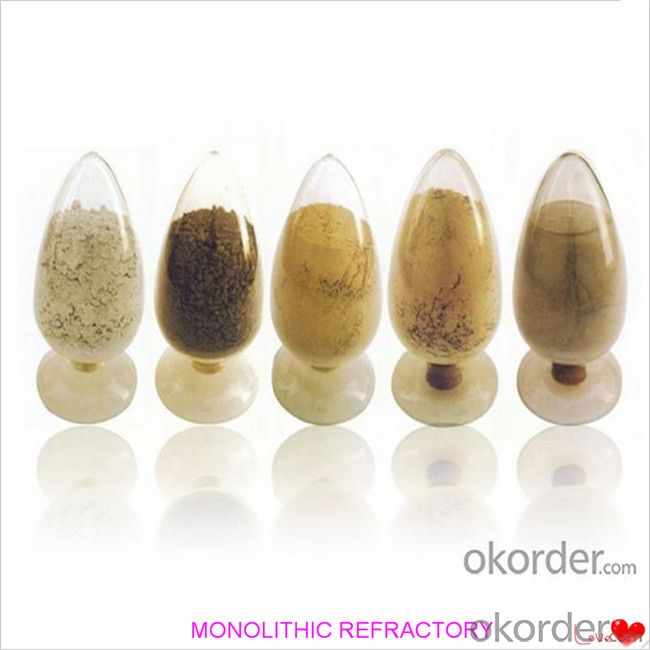
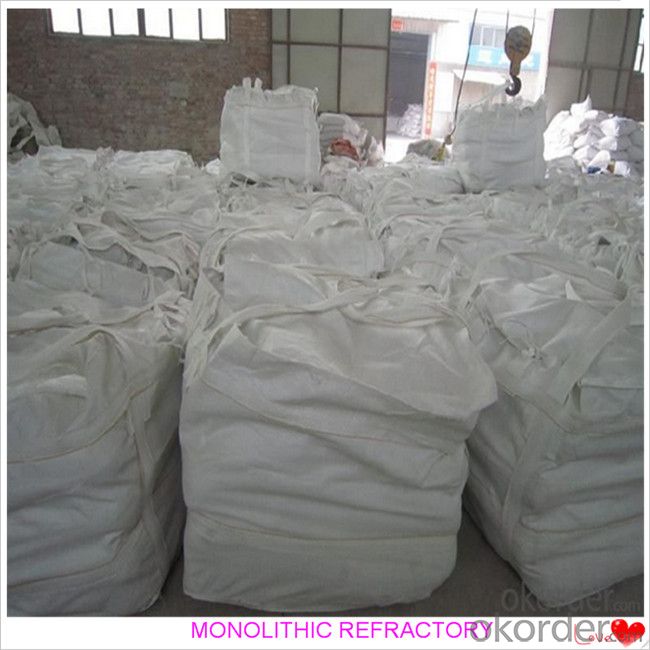
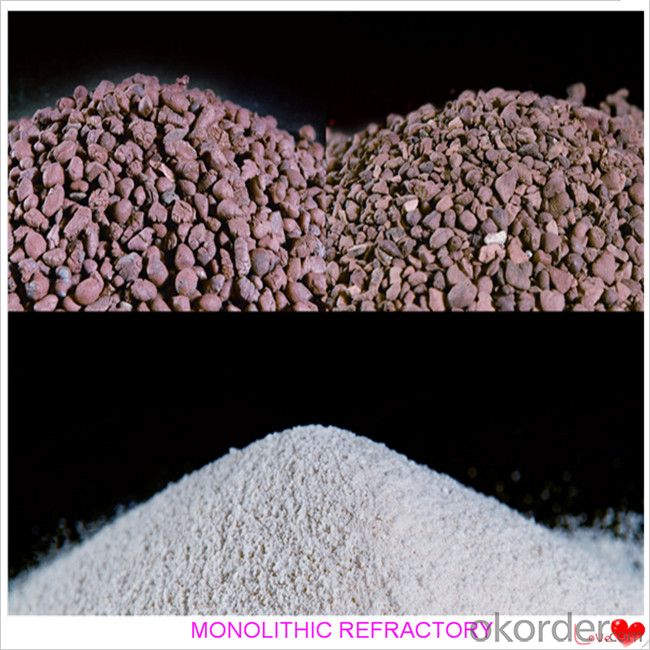
- Q: How do monolithic refractories contribute to the overall productivity of iron and steel plants?
- Monolithic refractories play a crucial role in enhancing the overall productivity of iron and steel plants in several ways. Firstly, their high thermal conductivity and insulation properties help to maintain and regulate the temperature inside the furnaces, ensuring efficient and consistent heat distribution. This facilitates the optimal melting and refining of iron and steel, reducing energy consumption and improving productivity. Additionally, monolithic refractories offer excellent resistance to chemical attacks, such as the corrosive effect of molten metals and slags. This resistance enables longer refractory lifespan, reducing downtime for repairs and replacements, and ultimately maximizing the plant's operational efficiency. Moreover, the monolithic nature of these refractories allows for easy installation and repair, minimizing the time and effort required for maintenance activities. This quick and efficient process further contributes to the overall productivity of iron and steel plants by reducing production disruptions. In summary, monolithic refractories enhance the overall productivity of iron and steel plants by providing efficient heat management, superior chemical resistance, and easy maintenance, leading to improved energy efficiency, reduced downtime, and enhanced operational efficiency.
- Q: How do monolithic refractories resist abrasion in the iron and steel industry?
- Monolithic refractories in the iron and steel industry resist abrasion through their inherent properties and design features. These refractories are formulated with high levels of abrasion-resistant materials such as alumina, silicon carbide, and zirconia, which provide excellent resistance to wear and erosion caused by the movement of molten metal, slag, and other abrasive materials in the production processes. Additionally, the monolithic nature of these refractories eliminates the presence of joints and gaps, reducing weak points and enhancing their ability to withstand abrasion.
- Q: How long is the lifespan of monolithic refractories in iron and steel applications?
- The lifespan of monolithic refractories in iron and steel applications can vary depending on several factors such as the specific type of refractory material used, the operating conditions, and the maintenance practices. However, on average, monolithic refractories in iron and steel applications can last anywhere from a few months to several years.
- Q: How do monolithic refractories withstand thermal shock and mechanical stress?
- Monolithic refractories are engineered to withstand high temperatures and harsh working conditions, making them ideal for applications that involve thermal shock and mechanical stress. Firstly, monolithic refractories are designed with a high thermal conductivity, which allows them to quickly absorb and distribute heat. This property helps to minimize thermal gradients within the material, reducing the risk of thermal shock. When exposed to sudden temperature changes, the refractory material expands and contracts uniformly, preventing cracks and fractures from forming. Secondly, these refractories have excellent thermal shock resistance due to their low thermal expansion coefficient. This means that they have a minimal tendency to expand or contract when subjected to temperature fluctuations. As a result, they can withstand rapid changes in temperature without experiencing significant structural damage. Furthermore, monolithic refractories possess high mechanical strength, enabling them to withstand various types of mechanical stress. They are formulated with carefully selected raw materials and additives that enhance their load-bearing capacity and resistance to mechanical forces. This enables them to withstand the weight of the surrounding materials, as well as any external forces or vibrations that may be present in the application environment. Moreover, monolithic refractories have good structural integrity and stability, thanks to their dense and compact microstructure. These materials are typically formed by a combination of fine powders, binders, and additives, which are mixed and shaped to create a solid, cohesive structure. This structure provides resistance against mechanical stress, preventing the refractories from crumbling or disintegrating under pressure. In summary, monolithic refractories withstand thermal shock and mechanical stress through their high thermal conductivity, low thermal expansion coefficient, robust mechanical strength, and structural integrity. These properties make them reliable and durable materials for applications requiring resistance to extreme temperatures and challenging operating conditions.
- Q: How do monolithic refractories improve the quality and consistency of iron and steel products?
- Monolithic refractories enhance the quality and consistency of iron and steel products by providing excellent resistance to high temperatures, thermal shock, and chemical attacks. These refractories form a seamless lining within the furnaces and other equipment used in the production process, ensuring optimal insulation and minimizing heat loss. This insulation helps in maintaining stable and controlled temperatures, preventing unwanted variations that can affect the final product's quality. Additionally, monolithic refractories' durability and resistance to wear and tear contribute to consistent and reliable performance, resulting in improved iron and steel product quality.
- Q: How do monolithic refractories enhance the efficiency of reheating furnaces?
- Monolithic refractories play a crucial role in enhancing the efficiency of reheating furnaces in several ways. Firstly, monolithic refractories offer excellent thermal insulation properties, which minimize heat losses from the furnace. This insulation helps to maintain a high and consistent temperature inside the furnace, reducing the need for excessive fuel consumption and improving energy efficiency. Secondly, monolithic refractories have high thermal conductivity, which allows for efficient heat transfer within the furnace. This means that the heat generated by the burners can be evenly distributed throughout the furnace, ensuring uniform heating of the materials being reheated. This uniform heating not only enhances the overall efficiency but also helps to prevent hot spots or cold spots, which can negatively impact the quality of the reheated products. Moreover, monolithic refractories have excellent resistance to thermal shock and mechanical stress. Reheating furnaces often undergo rapid temperature changes and are subjected to intense mechanical forces due to the movement of materials and the operation of various equipment. The use of monolithic refractories helps to prevent cracks, spalling, and other forms of refractory damage, thus ensuring the longevity and continuous operation of the furnace without interruptions for repairs. Additionally, monolithic refractories offer ease of installation, repair, and maintenance compared to traditional brick refractories. Their ability to be cast or sprayed onto the furnace lining allows for a more precise and seamless installation, reducing the risk of weak joints or gaps that could compromise the furnace's efficiency. Furthermore, in case of any damage or wear, monolithic refractories can be easily repaired or patched up, minimizing downtime and improving the overall productivity of the furnace. In summary, the use of monolithic refractories in reheating furnaces enhances efficiency by providing effective thermal insulation, facilitating uniform heat distribution, resisting thermal shock and mechanical stress, and allowing for easier installation and maintenance. These benefits contribute to lower energy consumption, improved product quality, increased furnace durability, and reduced operational costs.
- Q: What are monolithic refractories and how are they different from other refractory materials?
- Monolithic refractories, unlike bricks or tiles, are refractory materials that are not pre-formed into specific shapes or sizes. Instead, they are composed of a mixture of aggregates, binders, and additives, which are then installed and cured to create a solid and dense structure. One notable difference between monolithic refractories and other refractory materials is their versatility and ease of installation. While traditional bricks or tiles require skilled labor and careful assembly, monolithic refractories can be poured, sprayed, or gunned into place, allowing for a faster and more efficient installation process. This makes them particularly suitable for complex shapes or hard-to-reach areas. Another distinction lies in the physical properties of monolithic refractories. Unlike bricks and tiles, which are known for their mechanical strength and resistance to thermal shock, monolithic refractories can be customized to exhibit a wide range of properties. Depending on the specific application requirements, they can be engineered to have excellent thermal insulation, superior corrosion resistance, or enhanced abrasion resistance. This adaptability makes monolithic refractories suitable for various industries, including steel, cement, glass, and petrochemical. Furthermore, monolithic refractories have the advantage of being able to expand and contract with temperature changes, unlike rigid brick structures. This thermal flexibility helps prevent cracking and damage caused by thermal cycling, thus prolonging the lifespan of the refractory lining. Additionally, monolithic refractories offer better refractory integrity and reduced joint failure since they do not have seams or weak points that are susceptible to thermal stresses. In conclusion, monolithic refractories are a versatile and convenient type of refractory material that can be tailored to meet specific application requirements. Their easy installation, thermal flexibility, and customizable properties distinguish them from other refractory materials like bricks or tiles.
- Q: How can the lifespan of monolithic refractories be extended in the iron and steel industry?
- The lifespan of monolithic refractories in the iron and steel industry can be extended through various measures. Firstly, proper installation and maintenance of the refractories is crucial. This includes ensuring that the refractories are correctly shaped and sized to fit the specific application, as well as using appropriate installation techniques and materials. Regular inspections should be conducted to identify any signs of wear or damage, and immediate repairs or replacements should be carried out to prevent further deterioration. Secondly, implementing effective heat management practices can significantly prolong the lifespan of monolithic refractories. This involves monitoring and controlling the temperature gradients within the refractory lining to prevent thermal shock and excessive thermal cycling. Adequate insulation and cooling systems should also be in place to maintain a stable and controlled environment. Furthermore, proper handling and operation of the equipment and processes can contribute to extending the refractory lifespan. Avoiding sudden temperature changes, minimizing mechanical stress and impact, and employing appropriate operating procedures can help reduce the wear and tear on the refractories. Additionally, utilizing advanced refractory materials and technologies can enhance the lifespan of monolithic refractories. The development and use of high-performance and specialized refractories, such as advanced ceramics or specialized coatings, can provide increased resistance to thermal and chemical degradation, ultimately extending their lifespan. Lastly, continuous research and development efforts should be undertaken to explore innovative solutions for refractory longevity in the iron and steel industry. Collaborating with suppliers, experts, and industry partners can help identify and implement new technologies and techniques that can improve the durability and performance of monolithic refractories. In summary, extending the lifespan of monolithic refractories in the iron and steel industry requires a combination of proper installation and maintenance, effective heat management, careful handling and operation, utilization of advanced materials, and ongoing research and development. By implementing these strategies, the iron and steel industry can optimize refractory performance and reduce downtime and costs associated with frequent replacements.
- Q: How do monolithic refractories improve the efficiency of ladle and tundish lining systems?
- The efficiency of ladle and tundish lining systems is greatly enhanced by monolithic refractories in several ways. Firstly, these refractories are made from a single piece of material, eliminating the need for joints or seams. This seamless construction guarantees a lack of weak points in the lining system, reducing the chances of molten metal leakage or infiltration. Moreover, monolithic refractories possess exceptional thermal insulation properties. With their low thermal conductivity, they are able to withstand high temperatures without transferring heat to the surrounding environment. This insulation capability minimizes heat loss from the ladle or tundish, resulting in improved heat retention and energy efficiency. Additionally, it ensures that the desired temperature of the molten metal is maintained, preventing premature solidification and ensuring the necessary fluidity for casting. Furthermore, monolithic refractories exhibit outstanding resistance to chemical attacks caused by molten metal and slag. Their excellent corrosion resistance properties ensure the durability and integrity of the lining, even in the face of aggressive chemical reactions. This resistance to corrosion prolongs the lifespan of the lining system, reducing the need for frequent maintenance and replacement, thereby increasing overall efficiency and reducing downtime. Another advantage of monolithic refractories is their easy installation. Unlike traditional brick or block linings, monolithic refractories can be applied as a single, uniform layer, simplifying and speeding up the installation process. This reduces the time required for lining repairs or replacements, minimizing disruptions to production and enhancing the overall operational efficiency of ladles and tundishes. In conclusion, monolithic refractories enhance the efficiency of ladle and tundish lining systems through their seamless construction, excellent thermal insulation, superior corrosion resistance, and easy installation. These characteristics ensure improved heat retention, reduced heat loss, increased durability, and minimized downtime, resulting in enhanced productivity and cost-effectiveness for metal casting processes.
- Q: What are the typical properties of monolithic refractories used in iron and steel industry?
- Monolithic refractories used in the iron and steel industry typically possess high thermal conductivity, excellent resistance to thermal shock, and high mechanical strength. They are also known for their ability to withstand high temperatures and harsh chemical environments. Additionally, these refractories exhibit good erosion and abrasion resistance, low porosity, and high density, making them ideal for lining furnaces, ladles, and other equipment in the iron and steel production process.
Send your message to us
Monolithic Refractories Mesh Shape Castable for Fireplace and Industrial Furnace
- Loading Port:
- China main port
- Payment Terms:
- TT OR LC
- Min Order Qty:
- 1000 kg
- Supply Capability:
- 3000000 kg/month
OKorder Service Pledge
OKorder Financial Service
Similar products
Hot products
Hot Searches
Related keywords
